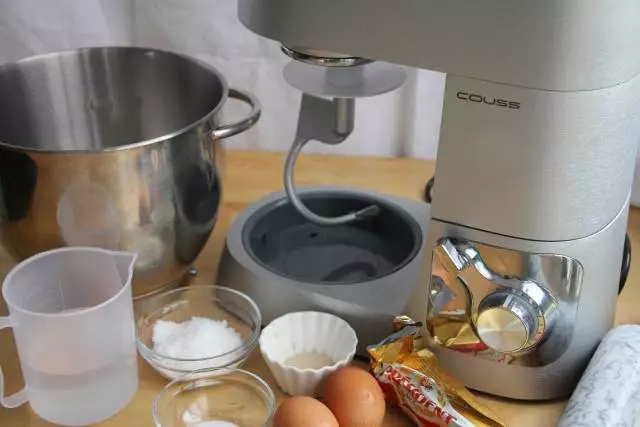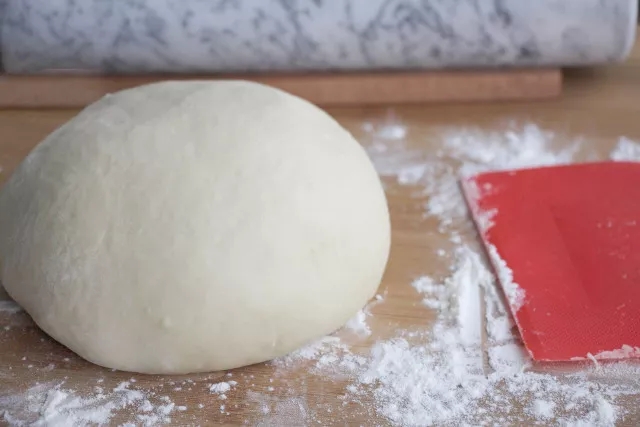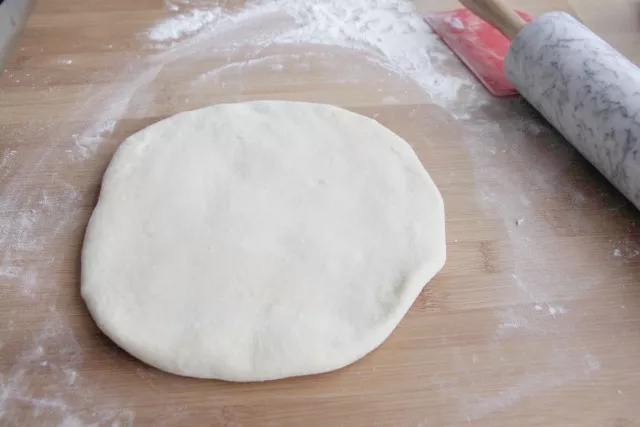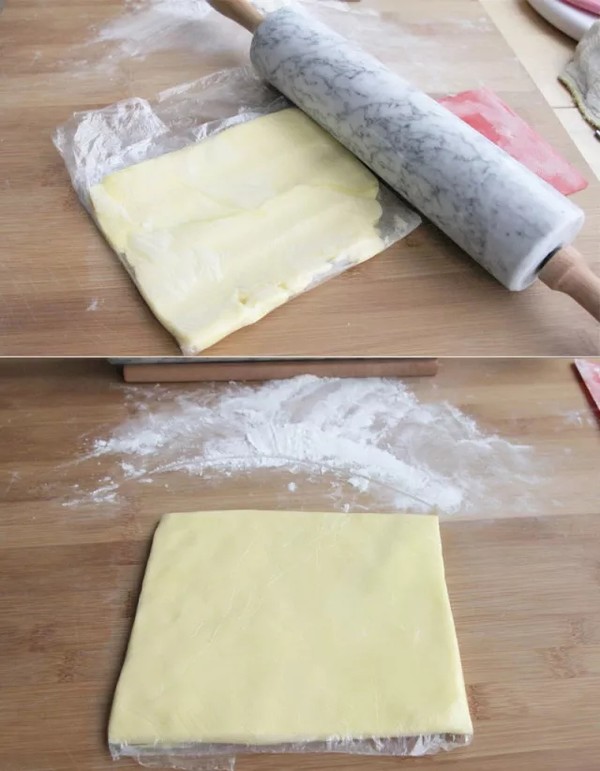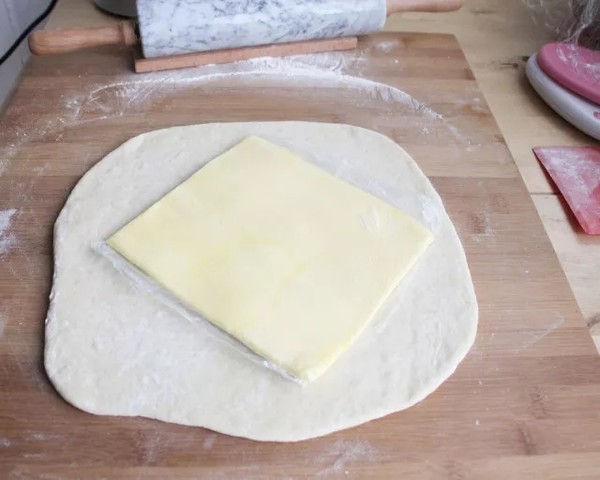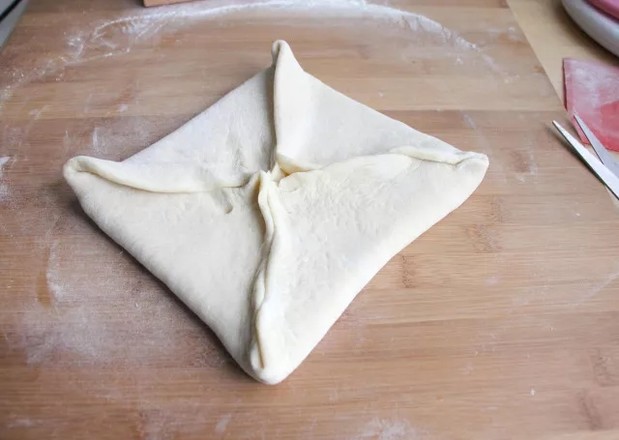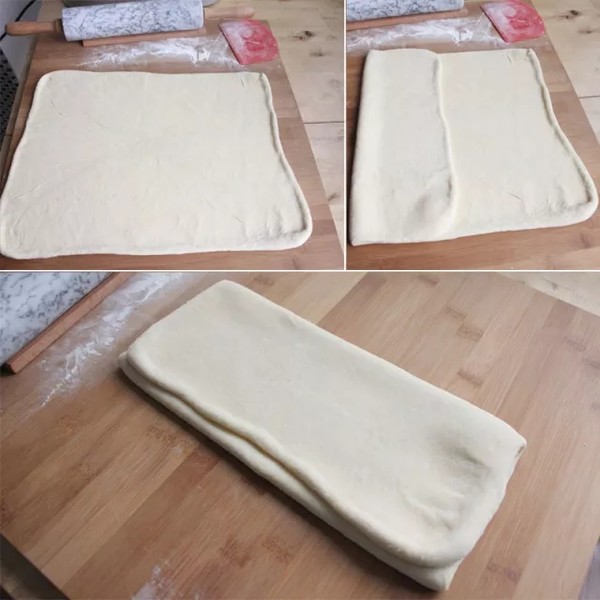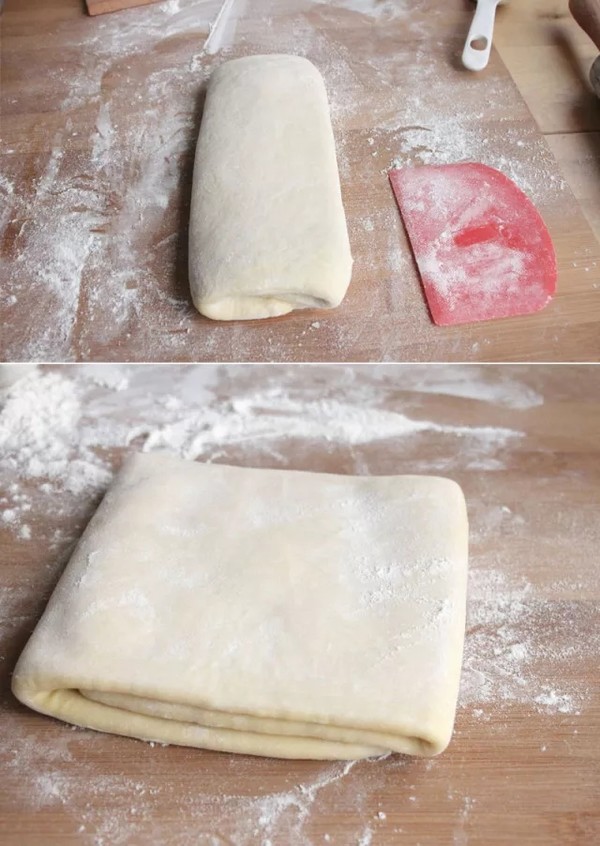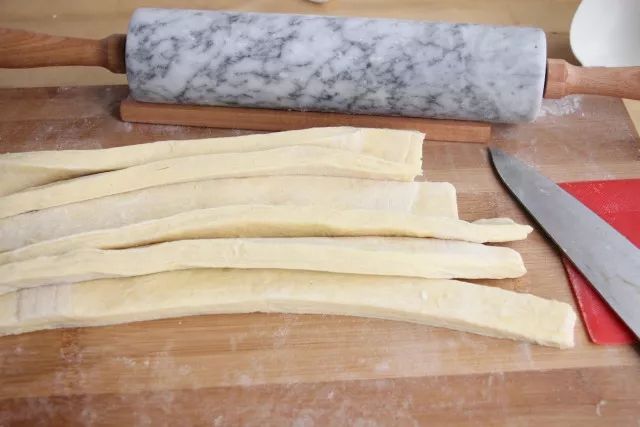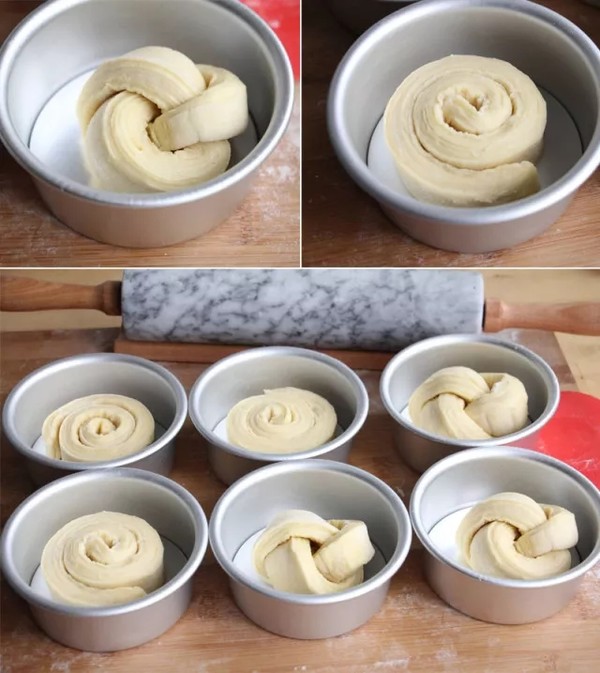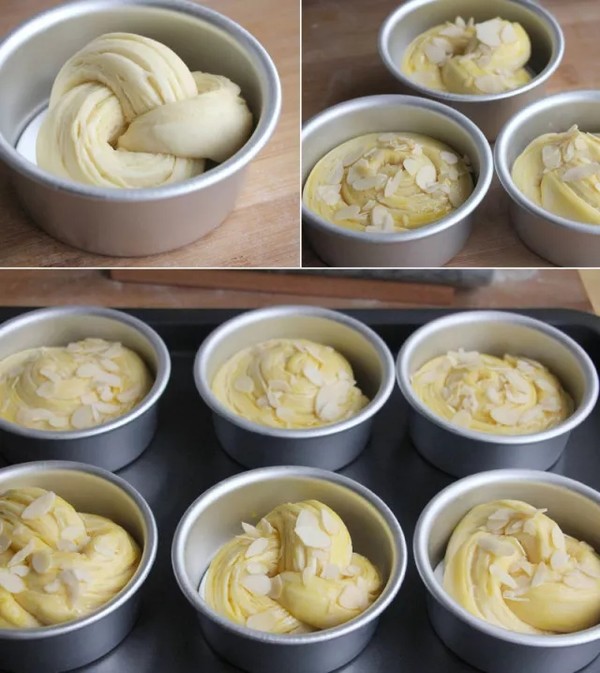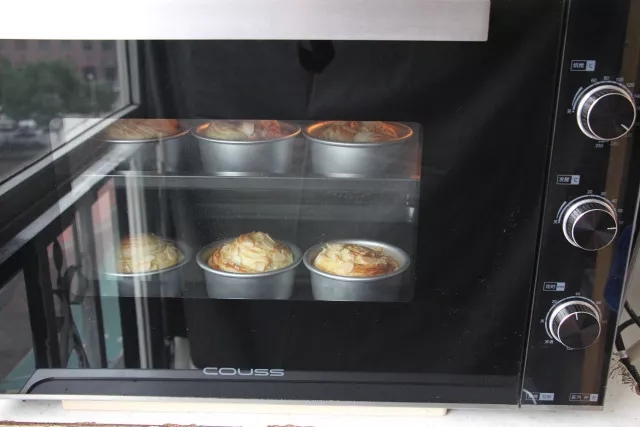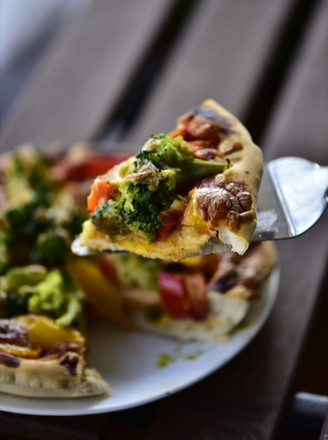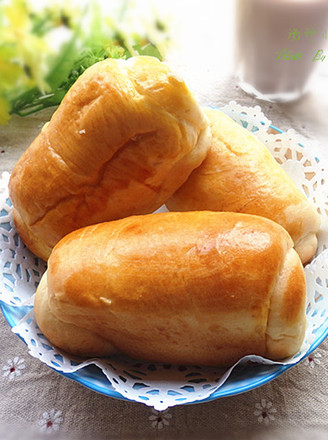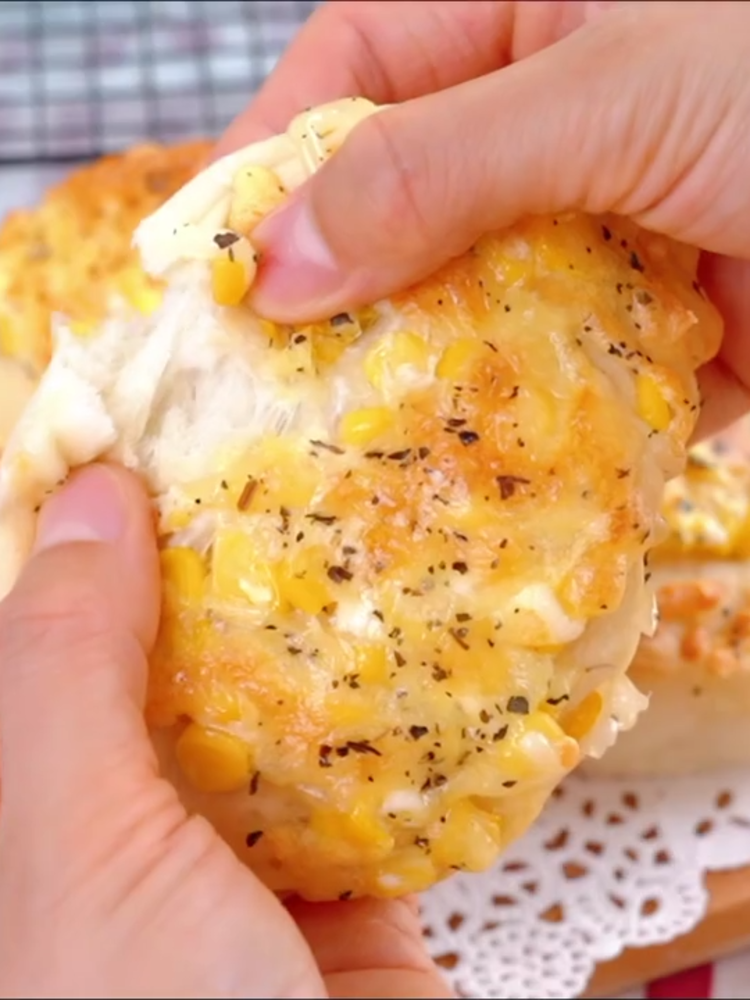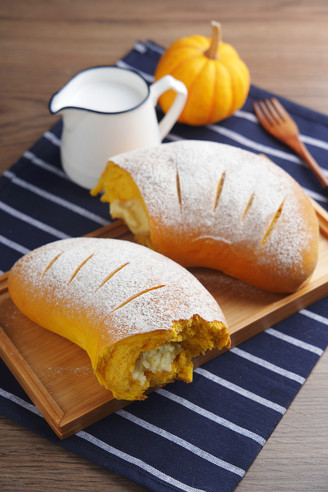Danish Shredded Bread
1.
Prepare all the ingredients, put all the ingredients except butter in the cook machine, mix in the first gear and then turn to the third gear to knead the dough.
2.
Knead the dough until it is smooth.
3.
Roll the kneaded dough into a square, wrap it in a fresh-keeping bag, and freeze it in the refrigerator overnight. (There is no need to worry about how much the rolling pressure is mostly small. The purpose of this step is mainly to quickly freeze and inhibit fermentation.)
4.
Put the wrapped butter in a fresh-keeping bag, roll it into a square shape, and refrigerate for later use.
5.
Thaw the dough to the same softness and hardness as the butter, and adjust the size of the crust slightly before wrapping the butter until the butter is the right size.
6.
Fold the four corners of the dough, wrap in butter, and pinch the joints tightly.
7.
Roll out the dough into a square shape, fold it 1/3 on the left side, and then fold it on the right side to complete a 3-fold fold.
8.
Roll out the dough in the same direction, fold it 1/3 on the left side, and fold it up on the right side to complete the second three-fold fold. After the dough is wrapped and refrigerated for 1 hour, perform a tri-folding again for a total of 3 times.
9.
After the dough is refrigerated for 1 hour, roll out a dough with a length of about 30cm and a width of 12cm, and then cut it into 2cm-wide noodles, totaling 6 servings.
10.
Roll the long strip of dough into a circle or knot it into the middle of the mold, or tie it into a knot and place it in the middle of the 6-inch chiffon cake mold.
11.
Put the mold into the CF-6000 temperature and humidity dual-control fermentation tank, set the humidity to 85 and temperature 28°, and ferment to about 1.5 size, about 40 minutes to 1 hour.
12.
Take out the fermented dough, gently sweep a layer of egg mixture, and sprinkle with almond slices.
13.
Couss CO-960A hot-air circulating oven, preheat at 200° in advance for 10 minutes, put the bread in and bake for 5 minutes, then adjust the temperature to 160°, and the baking color will take about 15-20 minutes.
14.
When the bread is out of the oven, it will be demoulded immediately. Sprinkle powdered sugar on the surface after it cools slightly to maintain a crispy taste. If you like a soft taste, brush honey water on the surface and put it in a fresh-keeping bag to make the surface moist before eating.


Tips:
1. After kneading the dough, the refrigeration time can be adjusted according to the situation. If the dough is kneaded to the complete stage and has good ductility, it can be refrigerated for half an hour. The wrapped butter can be placed at room temperature to soothe it, which is easier to handle, and it is best to put it in a fresh-keeping bag and roll it out. You can roll it out first and refrigerate for later use, or roll out the dough before thawing and refrigerate it for later use. You can adjust it according to your own time.
2. The hardness of the butter should be similar to that of the dough to avoid the phenomenon of oil breaking. The purpose of rolling the butter into the dough is to press the butter into the dough to form a layer of butter. The first condition is that the butter cannot be melted. The melting point of animal butter is about 26°-28°. Therefore, in summer, you must turn on the air conditioner to make this bread, otherwise the room temperature is too high, and the room temperature is warmed by the hand. During the operation, the butter will melt in the dough, causing the dough to be wet and sticky, and the dough will become pasty in severe cases. But the butter should not be too hard, otherwise the butter will break during the rolling process. During the production process, keep the butter wrapped in a low temperature state. If you feel that the butter has become soft, you can stop the operation and put it in the refrigerator before operating. In order to avoid oil leakage when rolling.
3. The dough can be shaped according to personal preference when it is placed in the mold. But try not to touch the side of the dough to damage the layer, and the dough should be rolled tightly. If the roll is not tight, the seal can be fixed with a toothpick to prevent the expansion force from exploding the mold during baking.
4. Don't just look at the time for the fermentation of the dough, but look at the state of the dough. In summer, the temperature is high, so you must lower the temperature to ferment. If it exceeds 28°, the butter will melt and flow out of the dough.
5. The baking temperature and time are for reference only, please adjust appropriately according to the actual situation.


